
Farm Tracking 101, Part 4
Once you've learned the
cats, the dogs, and the bounders, you've really learned the most common
tracks. Here are a few more common and/or distinctive tracks you
should be aware of. (I had to forage for some of these
images from the internet --- click to see their source.)
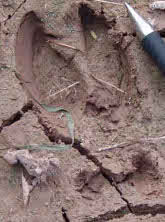
The deer is impossible to confuse with any other species (unless you
live in an area with moose or elk.) The divided hooves may or may
not have small back hooves showing.
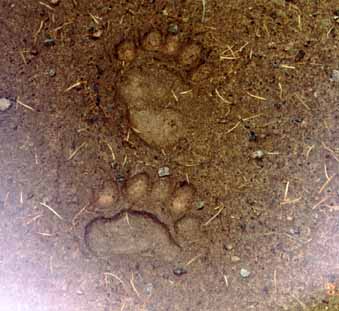
The back foot of a bear looks a bit like a barefoot human, but
bigger. Unmistakeable!
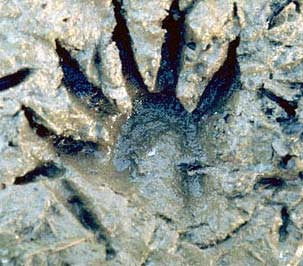
Raccoon tracks aren't common in the snow, but you'll see them in the
mud along creeks in the summer. Their front feet look like little
human hands. Again --- unmistakeable!
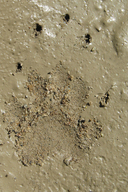
I purposefully haven't talked about the weasel family because I never
seem to see them and I don't know much about them. Just be aware
they're out there. Most weasels have bounding tracks in sets of
four with simple pads which look more like dog pads than the delicate
pads of a chipmunk or squirrel. Skunks (also in the weasel
family) have big front claws. This is a skunk track.
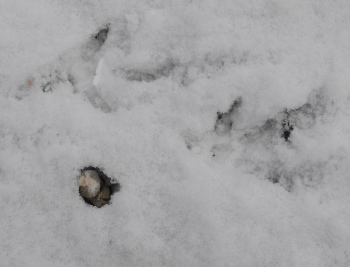
Birds, of course, have three long toes in the front and often one in
the back. This is a chicken track, but turkey tracks look nearly
identical (except for being much bigger!) Songbird tracks tend to
be in pairs because they're hoppers, not walkers. The blob of
chicken poop is also distinctive, but scatology is a post for another
day!
| This post is part of our Farm Tracking 101 lunchtime series.
Read all of the entries: |
Want more in-depth information? Browse through our books.
Or explore more posts by date or by subject.
About us: Anna Hess and Mark Hamilton spent over a decade living self-sufficiently in the mountains of Virginia before moving north to start over from scratch in the foothills of Ohio. They've experimented with permaculture, no-till gardening, trailersteading, home-based microbusinesses and much more, writing about their adventures in both blogs and books.
Want to be notified when new comments are posted on this page? Click on the RSS button after you add a comment to subscribe to the comment feed, or simply check the box beside "email replies to me" while writing your comment.
